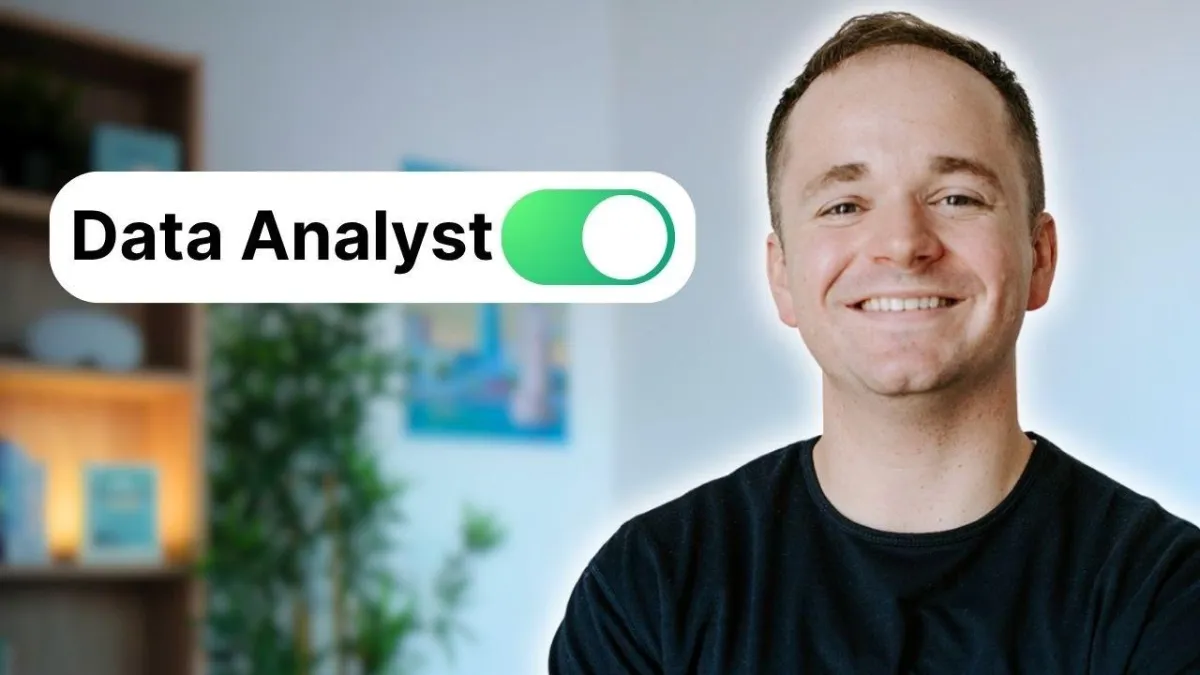
Ways You Didn't Realize You Were a Data Analyst!
How is a Commercial Driver a Data Analyst?
What they actually do:
Track mileage, fuel usage, and delivery times to meet route and delivery targets.
Data analyst version:
Monitored and analyzed route performance data to improve delivery efficiency and reduce fuel costs.
What they actually do:
Inspect and log vehicle performance, maintenance issues, and safety checks.
Data analyst version:
Collected and evaluated vehicle inspection data to identify maintenance trends and prevent breakdowns.
What they actually do:
Use GPS and delivery software to follow optimized routes and meet delivery deadlines.
Data analyst version:
Utilized routing and tracking data to assess route optimization strategies and delivery time accuracy.
What they actually do:
Report incidents, delays, or delivery issues to dispatch or management.
Data analyst version:
Captured and summarized incident data to identify recurring delivery bottlenecks and propose solutions.
What they actually do:
Document delivery logs, time sheets, and compliance records.
Data analyst version:
Maintained and analyzed delivery and compliance data to support regulatory reporting and operational reviews.
How is a Fashion Model a Data Analyst?
What they actually do:
Track engagement on social media posts and brand campaigns they’re featured in.
Data analyst version:
Analyzed campaign and content performance data to identify trends in audience engagement and optimize future collaborations.
What they actually do:
Receive feedback from photographers, directors, and clients during shoots.
Data analyst version:
Synthesized qualitative feedback data to identify patterns and improve shoot performance and client satisfaction.
What they actually do:
Maintain a portfolio and track which looks or campaigns lead to more bookings.
Data analyst version:
Monitored campaign outcomes to determine which portfolio elements correlated with increased booking rates.
What they actually do:
Manage a schedule of castings, shoots, and events with time and location constraints.
Data analyst version:
Used scheduling and location data to optimize booking logistics and reduce time conflicts across events.
What they actually do:
Track body measurements, health stats, and fitness progress to meet brand requirements.
Data analyst version:
Collected and analyzed personal health and measurement data to ensure alignment with client standards and readiness for shoots.
How is a Starbucks Barista a Data Analyst?
What they actually do:
Monitor sales of different drinks and upsells during shifts.
Data analyst version:
Analyzed point-of-sale data to identify trends in product sales and upsell effectiveness during peak hours.
What they actually do:
Track customer preferences and adapt recommendations based on common orders.
Data analyst version:
Used informal customer data patterns to personalize recommendations and improve customer satisfaction.
What they actually do:
Adjust prep based on time of day, weather, or local events.
Data analyst version:
Interpreted historical sales and external factors (e.g. weather, time) to forecast product demand and reduce waste.
What they actually do:
Log waste, remakes, and inventory usage.
Data analyst version:
Tracked and evaluated inventory and waste data to improve ordering accuracy and minimize product loss.
What they actually do:
Share feedback with management on workflow or bottlenecks.
Data analyst version:
Synthesized frontline operations feedback with performance trends to recommend process improvements and reduce wait times.
How is a Validation Engineer at a Pharmaceutical Company a Data Analyst?
What they actually do:
Test and document equipment, systems, and processes to ensure they meet regulatory standards.
Data analyst version:
Collected and analyzed validation test data to confirm compliance with regulatory and operational specifications.
What they actually do:
Monitor and record performance data from manufacturing or lab equipment.
Data analyst version:
Tracked equipment performance metrics to identify deviations, trends, and potential areas of failure.
What they actually do:
Write and execute protocols (IQ/OQ/PQ) and summarize the results.
Data analyst version:
Structured, executed, and interpreted protocol data to validate system reliability and performance under controlled conditions.
What they actually do:
Investigate anomalies and deviations in process performance or equipment behavior.
Data analyst version:
Analyzed deviation reports and historical data to determine root causes and recommend corrective actions.
What they actually do:
Prepare reports and documentation for audits, inspections, and internal quality systems.
Data analyst version:
Compiled analytical reports and data summaries to support regulatory audits and ensure data integrity.
How is a Account Manager / Trainer at a Cleaning Company a Data Analyst?
What they actually do:
Track how well cleaning teams perform using checklists, inspections, or client feedback.
Data analyst version:
Analyzed operational data to identify trends in organizational performance and key areas for improvement.
What they actually do:
Adjust team schedules to meet client needs while managing staffing limitations.
Data analyst version:
Optimized demand scheduling using data insights to improve coverage and reduce labor inefficiencies.
What they actually do:
Collect and act on feedback from clients about cleaning quality or service issues.
Data analyst version:
Evaluated customer feedback data to uncover service gaps and recommend targeted improvements.
What they actually do:
Train employees and monitor who completes training and how they perform afterward.
Data analyst version:
Tracked training completion rates and linked performance metrics to onboarding outcomes.
What they actually do:
Send updates to leadership or clients summarizing site performance or complaints.
Data analyst version:
Developed performance reports and dashboards to communicate KPIs and service trends to stakeholders.
How is a Speech Language Pathologist a Data Analyst?
What they actually do:
Track patient progress across multiple sessions using therapy notes and assessments.
Data analyst version:
Collected and analyzed longitudinal patient data to measure therapy outcomes and adjust treatment plans.
What they actually do:
Administer standardized tests to evaluate speech and language abilities.
Data analyst version:
Interpreted structured assessment data to identify performance trends and support evidence-based decision making.
What they actually do:
Write detailed progress reports for schools, caregivers, or insurance companies.
Data analyst version:
Compiled analytical reports to communicate key performance indicators and therapy milestones to stakeholders.
What they actually do:
Adapt therapy based on diagnosis, age, and patient response.
Data analyst version:
Used observational and outcome data to segment patients and personalize intervention strategies.
What they actually do:
Track session attendance and caseload across clients.
Data analyst version:
Monitored caseload data to identify utilization patterns and optimize scheduling efficiency.


